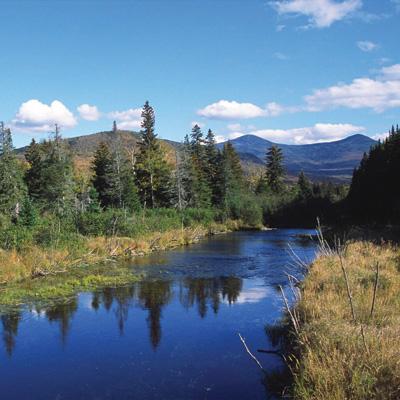Assessing the Depositional, Geological, Geographical and Biological Factors that Control Mercury Distribution in Aquatic Ecosystems of Northeastern North America

From 2001 to 2005, the BioDiversity Research Institute in Maine and Environment Canada in New Brunswick led a comprehensive effort to compile mercury data from across the northeastern United States and eastern Canada. NSRC researchers produced a database of over 300,000 measurements, mostly from freshwater environments. Results highlight the broad extent and serious effects of mercury across the landscape, the need to expand research to include forest ecosystems, occurrence of biological hotspots in sensitive environments, and demand for enhanced mercury monitoring.
Over 70 collaborators contributed to several key findings. Mercury levels are especially high in montane forests and particularly in the Adirondack Mountains of New York and in Nova Scotia and Newfoundland. Waters with high mercury levels are generally distant from point sources and urbanized land use, suggesting airborne mercury is a likely source. Analysis of fish showed 15% and 42% of water bodies sampled for brook trout and yellow perch, respectively, had average fish mercury concentrations exceeding the U.S. Environmental Protection Agency criterion. Elevated mercury levels in Bicknell's thrush and other forest songbirds demonstrate that methylmercury (toxic form of mercury) can also be produced in terrestrial ecosystems.
Areas of high mercury loading prevail in upper elevation ecosystems that receive more mercury deposition from surrounding lowlands, as well as areas near large mercury sources. Such biological hotspots also develop in watersheds where conditions are conducive to methylmercury production or build-up in the food chain. High mercury levels documented in these hotspots suggest the need for stronger mercury standards. For more detailed findings, view the Mercury Connections report.
